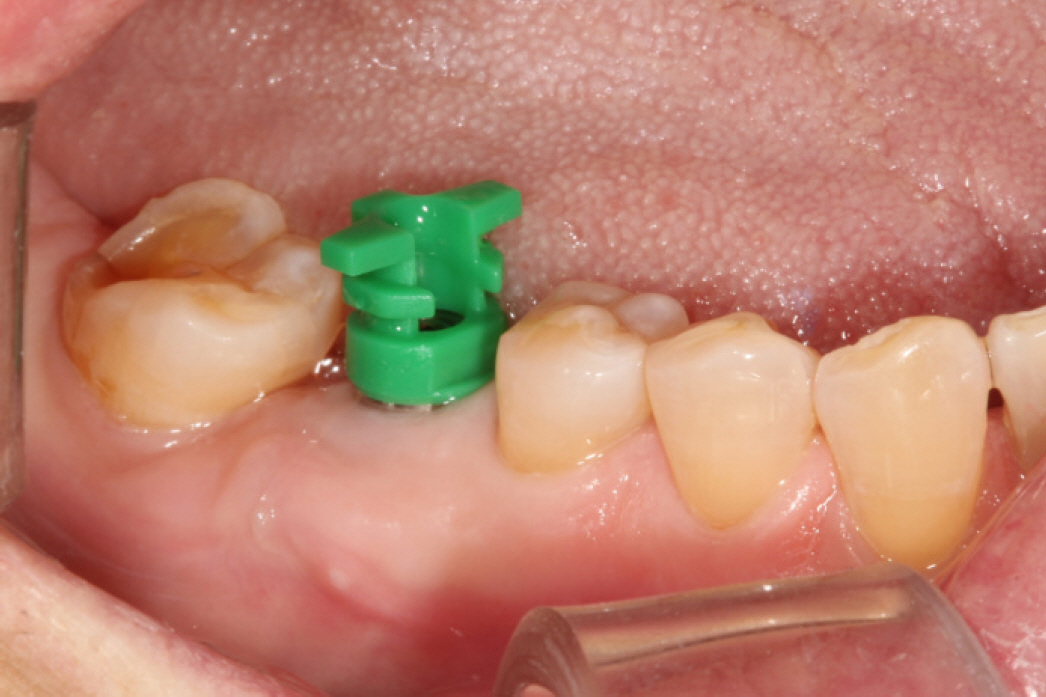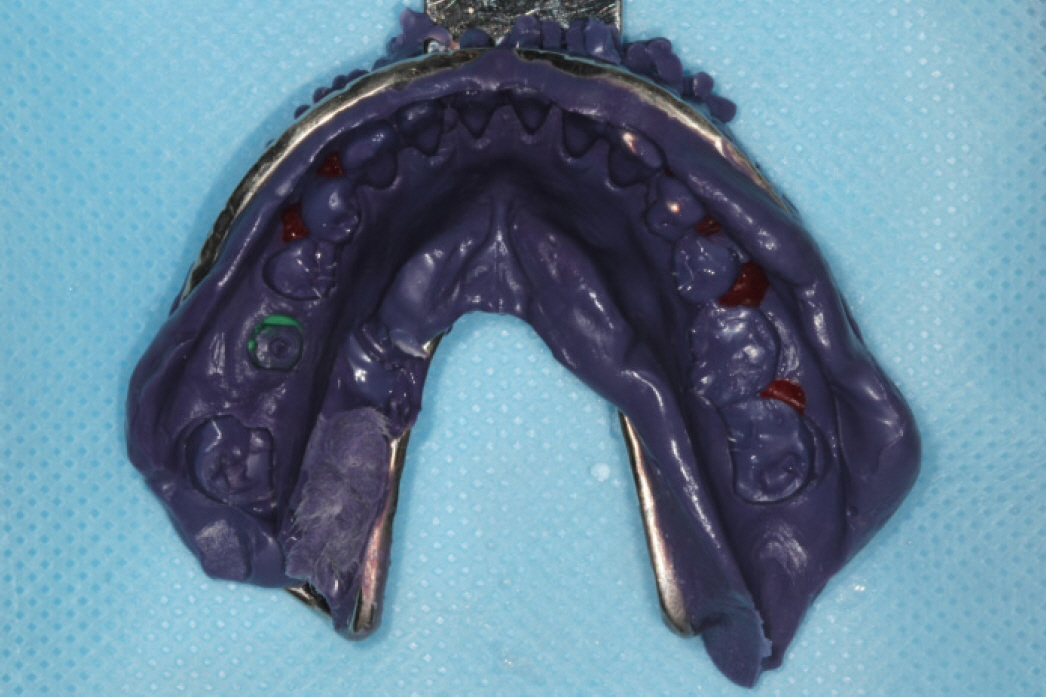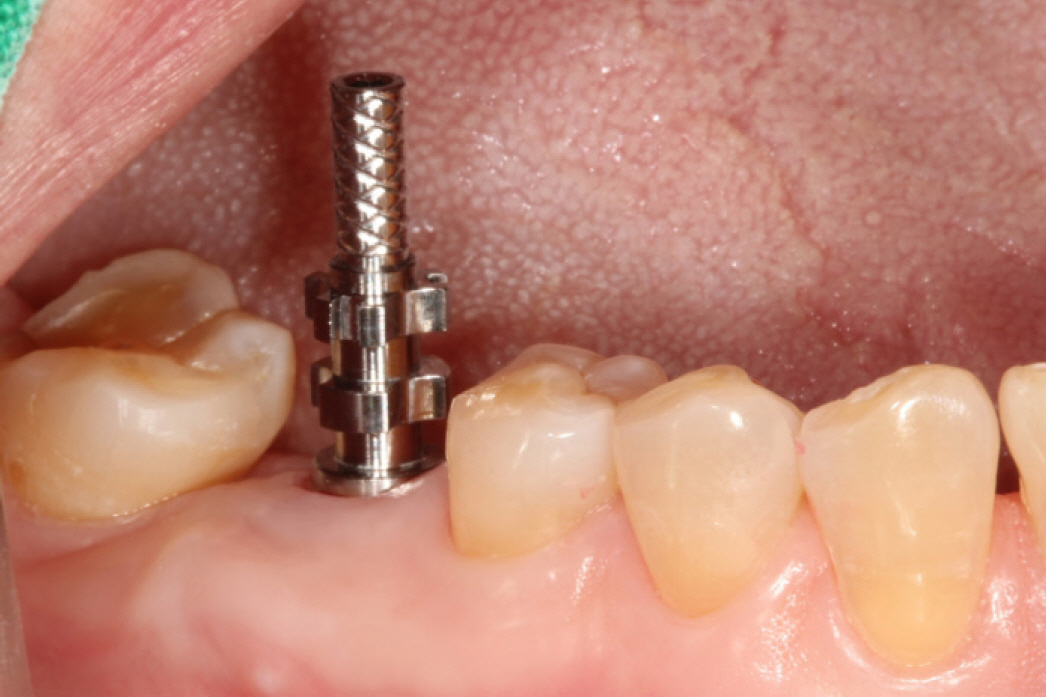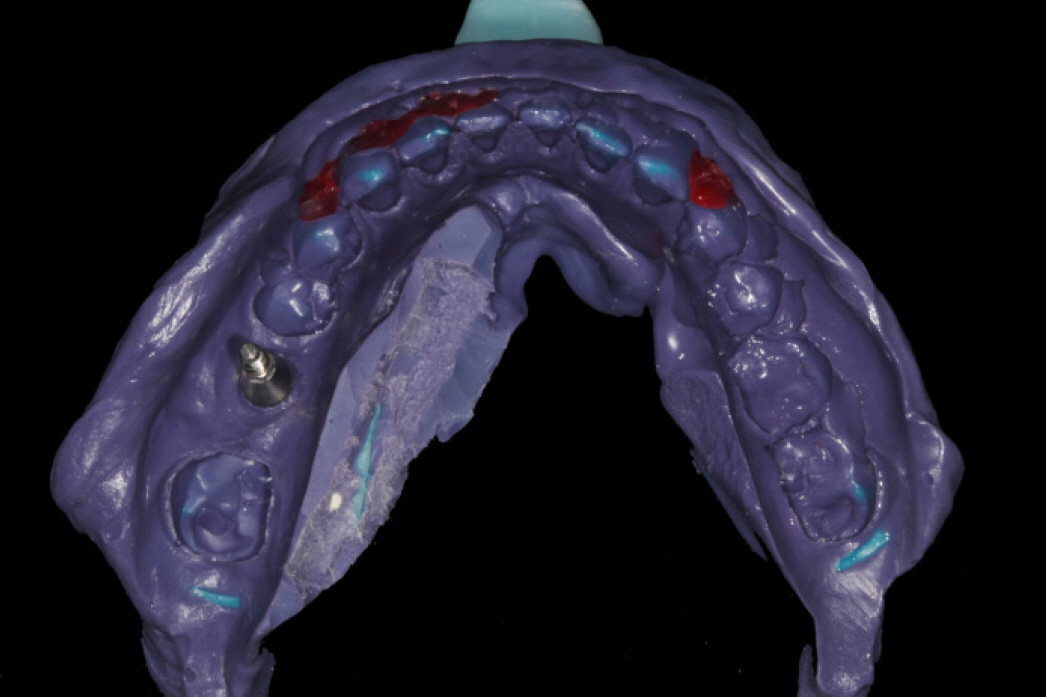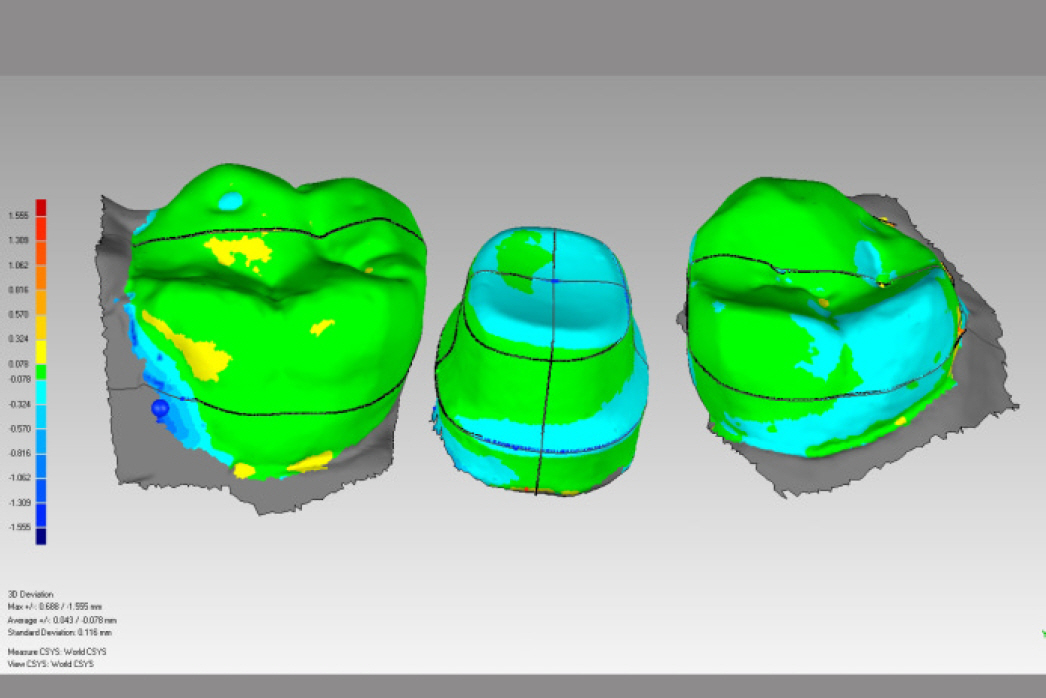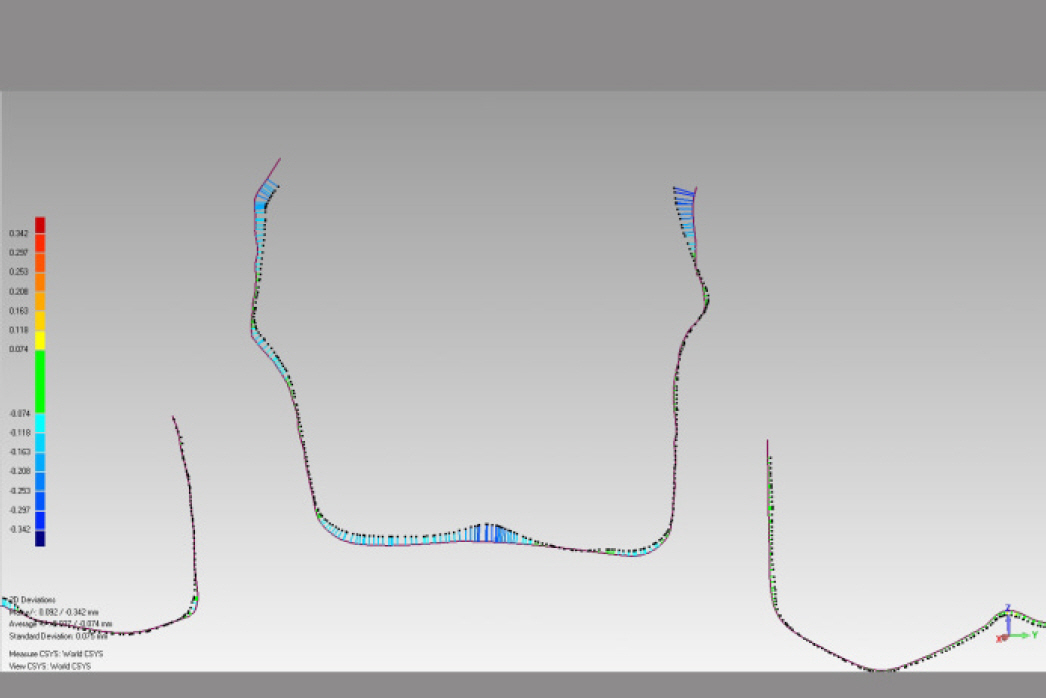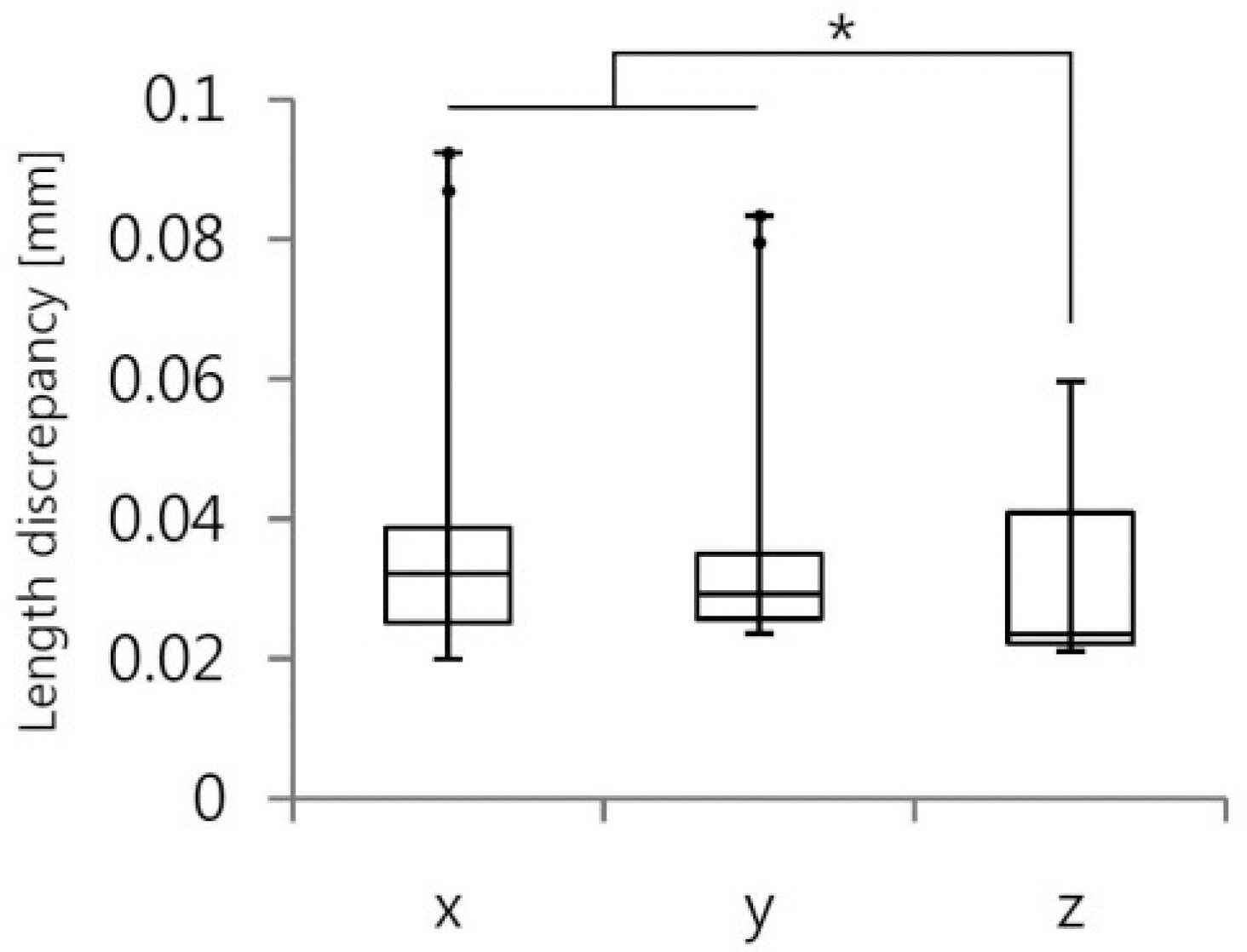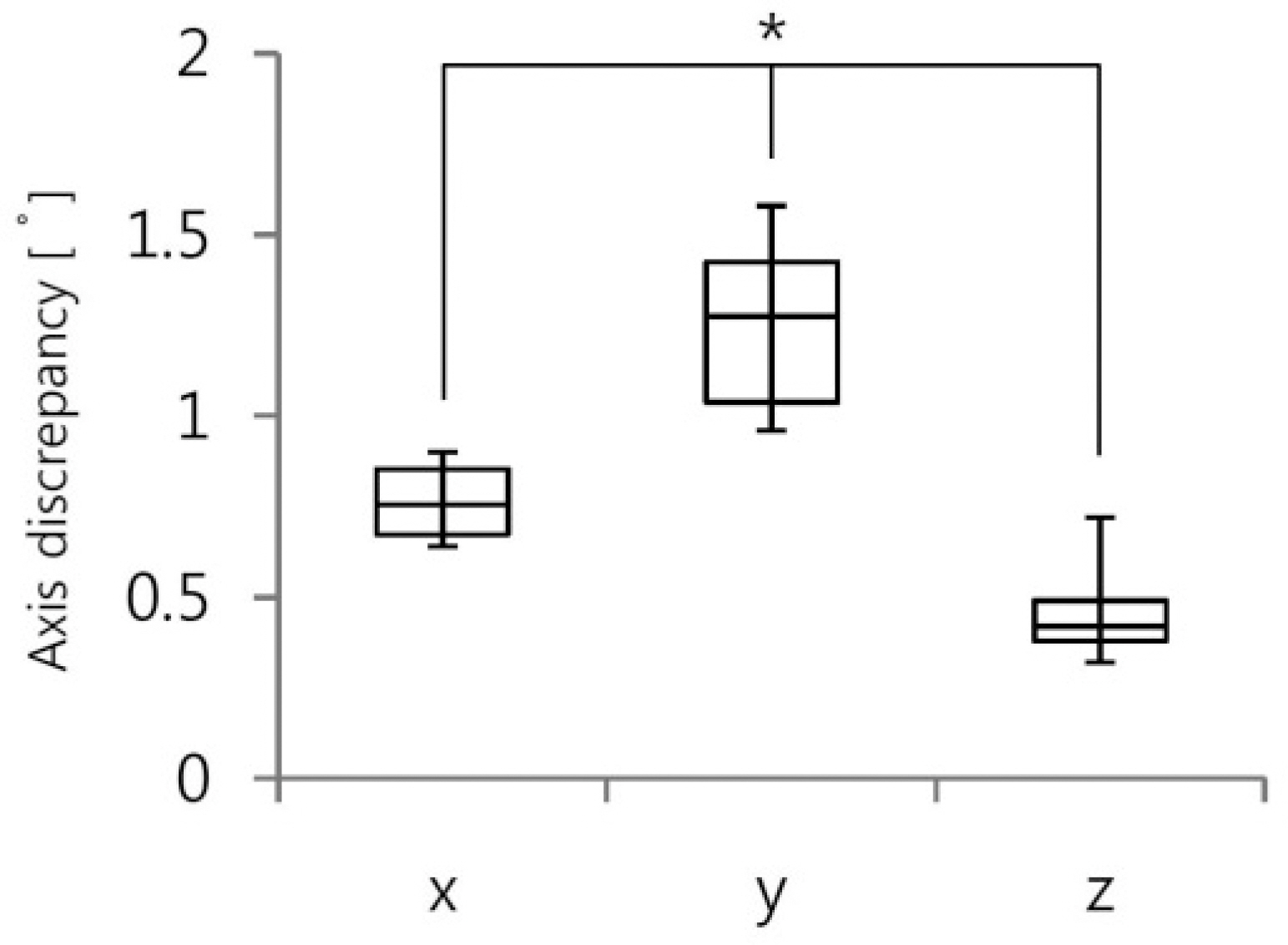J Korean Acad Prosthodont.
2015 Apr;53(2):105-110. 10.4047/jkap.2015.53.2.105.
Accuracy of the healing abutment and impression coping combined system on implant impression
- Affiliations
-
- 1Department of Prosthodontics, School of Dentistry, Kyungpook National University, Daegu, Republic of Korea. kblee@knu.ac.kr
- 2RaphaBio Co., Seoul, Republic of Korea.
- KMID: 2195392
- DOI: http://doi.org/10.4047/jkap.2015.53.2.105
Abstract
- PURPOSE
The purpose of this study was to evaluate the 3 dimensional accuracy of impression taking on the newly developed healing abutment and impression coping combined system comparing conventional pick-up type impression.
MATERIALS AND METHODS
For 10 patients who had a single missing tooth on molar area, dental implants (SuperLine; Dentium, Seoul, Korea) were placed and healing abutment (MyHealing; Raphabio Co., Seoul, Korea) abutments were connected. After 3 months, transfer type impression with MyHealing and pick-up type impression with impression coping were performed twice in the same patients, and master models were fabricated. Customized prosthetic abutments (Myplant; Raphabio Co., Seoul, Korea) were milled and connected to the master casts. Through a dental scanner (Scanner S600; Zirkonzahn, South Tyrol, Italy), the master casts were converted into virtual casts. The length and angulation differences between casts were measured using 3 dimentional analysis program (Geomagic Qualify 12; Geomagic, Morrisville, NC, USA). Statistical significance was calculated using Kruskal Wallis test and Mann-Whitney U test (alpha=.05).
RESULTS
The length differences between the two systems were 0.032 mm in sagittal plane, and 0.029 in coronal plane, and 0.023 mm in horizontal plane. The angulation differences were 0.755#x00B0; in sagittal plane, and 1.275#x00B0; in coronal plane, and 0.420#x00B0; in horizontal plane.
CONCLUSION
The accuracy of newly developed healing abutment system is similar to that of conventional pick-up impression. The new system can reduces chair time by not using separate impression coping.
Keyword
Figure
Reference
-
1. Rangert B, Jemt T, Jö rneus L. Forces and moments on Brå nemark implants. Int J Oral Maxillofac Implants. 1989; 4:241–7.2. Misch CE. Contemporary implant dentistry. 3rd ed.; Mosby. Elsevier;Canada. 2009. p. 68–84.3. Sones AD. Complications with osseointegrated implants. J Prosthet Dent. 1989; 62:581–5.
Article4. Sellers GC. Direct assembly framework for osseointegrated implant prosthesis. J Prosthet Dent. 1989; 62:662–8.
Article5. Henry PJ. An alternative method for the production of accurate casts and occlusal records in osseointegrated implant rehabilitation. J Prosthet Dent. 1987; 58:694–7.
Article6. Tautin FS. Impression making for osseointegrated dentures. J Prosthet Dent. 1985; 54:250–1.
Article7. Carr AB. Comparison of impression techniques for a five-implant mandibular model. Int J Oral Maxillofac Implants. 1991; 6:448–55.8. Humphries RM, Yaman P, Bloem TJ. The accuracy of implant master casts constructed from transfer impressions. Int J Oral Maxillofac Implants. 1990; 5:331–6.9. Phillips KM, Nicholls JI, Ma T, Rubenstein J. The accuracy of three implant impression techniques: A three-dimensional analysis. Int J Oral Maxillofac Implants. 1994; 9:533–40.10. Rodney J, Johansen R, Harris W. Dimensional accuracy of two implant impression copings. J Dent Res. 1991; 70:385.11. Cabral LM, Guedes CG. Comparative analysis of 4 impression techniques for implants. Implant Dent. 2007; 16:187–94.
Article12. Daoudi MF, Setchell DJ, Searson LJ. An evaluation of three implant level impression techniques for single tooth implant. Eur J Prosthodont Restor Dent. 2004; 12:9–14.13. Carr AB. Comparison of impression techniques for a two-implant 15-degree divergent model. Int J Oral Maxillofac Implants. 1992; 7:468–75.14. Liou AD, Nicholls JI, Yuodelis RA, Brudvik JS. Accuracy of re-placing three tapered transfer impression copings in two elastomeric impression materials. Int J Prosthodont. 1993; 6:377–83.15. Barrett MG, de Rijk WG, Burgess JO. The accuracy of six impression techniques for osseointegrated implants. J Prosthodont. 1993; 2:75–82.
Article16. Assuncao WG, Filho HG, Zaniquelli O. Evaluation of transfer impressions for osseointegrated implants at various angulations. Implant Dent. 2004; 13:358–66.
Article17. Del'Acqua MA, Arioli-Filho JN, Compagnoni MA, Mollo Fde A Jr. Accuracy of impression and pouring techniques for an implant-supported prosthesis. Int J Oral Maxillofac Implants. 2008; 23:226–36.18. Carr AB. Comparison of impression techniques for a five-implant mandibular model. Int J Oral Maxillofac Implants. 1991; 6:448–55.
- Full Text Links
- Actions
-
Cited
- CITED
-
- Close
- Share
- Similar articles
-
- Posterior single implant prosthesis using scannable healing abutment
- Comparison of the accuracy of implant digital impression coping
- A COMPARISON OF ACCURACY BETWEEN FIXTURE IMPRESSION AND ABUTMENT IMPRESSION FOR DENTAL IMPLANTS
- A Comparison of Scan Data Accuracy of Implant Scan Body and Encoded Healing Abutment
- Comparative accuracy of implant impression techniques with different splinting materials

